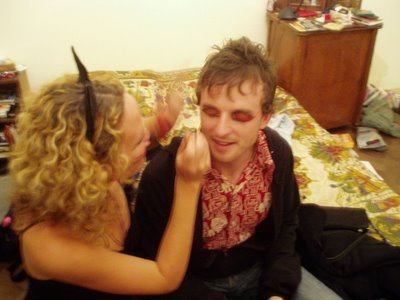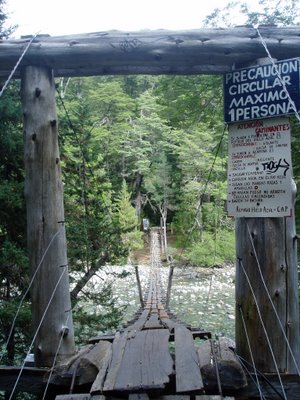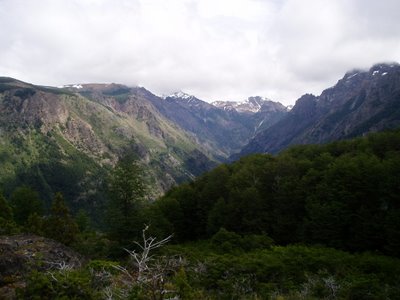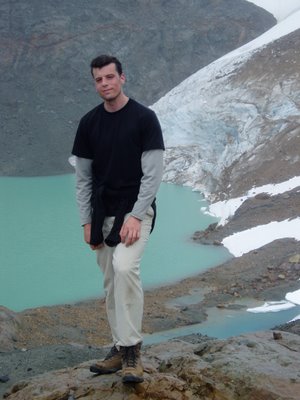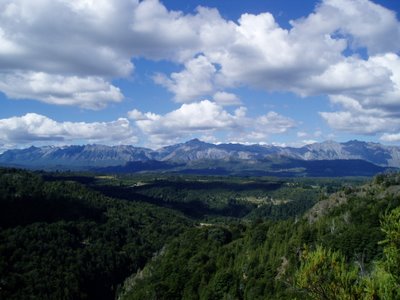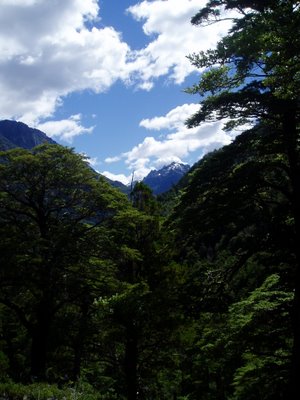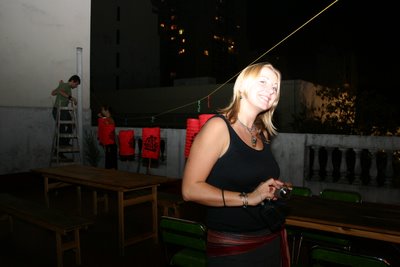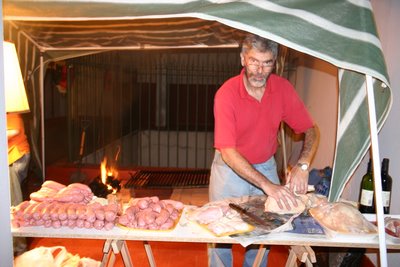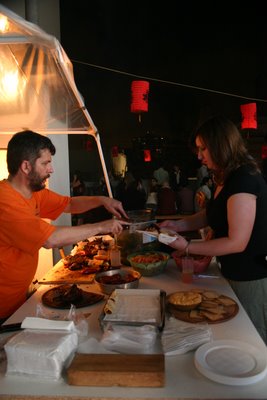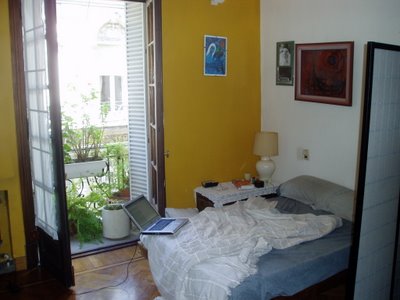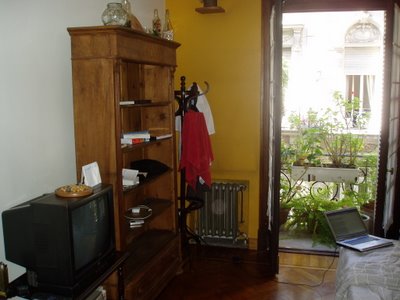Best Animal's Day ever
So I had another one of those experiences that every traveler has to try at one point or another: someone tried to rip me off. I've probably been ripped off a few times and not realized it, but this time I knew what I was looking for, and caught it. It was my first run-in with a dishonest cab driver, which is surprising, because as in other parts of the world, they have a reputation here for being less than trustworthy. There are three main scams that one has to watch for when taking a cab: the roundabout route, the juiced meter, and the dinero trucho (fake money). Fake bills are a problem for everyone, actually, and most waiters or cashiers will give anything higher than a ten a quick once over, but since a cab driver's customers are often inebriated, tired, or distracted, some cabbies can't resist availing themselves of the opportunity to slip a few through. The bills are quite obviously trucho, but if one isn't paying close attention, they're realistic enough to give the cabbie just enough time to get out of there. I always try to pay for cabs with exact change. The roundabout route is the obvious tactic of getting from origin to destination as indirectly as possible, or wading into evitable traffic when a more obvious and less congested street is available. Not much you can do about that one other than know your way around.
I've never been passed any dinero trucho, and as far as I can tell I haven't been taken to my destination via the scenic route, but last night I was the victim of a juiced meter. Our first stop was to drop off a friend, and when I got back in the cab, I noticed that the meter seemed a little high. Cabs are quite cheap here; one can travel for probably about fifteen minutes before cracking the $10 peso ($3.60 CAD) mark, and yet we were already at $9 pesos after just a quick jaunt to Villa Crespo. I watched the meter quite intently for the next ten minutes or so, and didn't notice anything out of the ordinary, though obviously it's difficult to gauge the rhythm of it accurately. Once it hit $17 pesos, though, the thing took off, and climbed three pesos in 15 seconds. I rather indignantly told the driver what I had seen, but he replied only with a "Qué?" I explained it again, this time far more directly and succinctly, but again, "Qué?" My Spanish certainly isn't eloquent, but I knew that I was being clear both times, so this guy was obviously determined to go down taking the fifth. I asked to be dropped off at the next corner and walked the remaining twenty minutes to my apartment.
Outside of cabs, the gringo doesn't have to worry too much about getting taken advantage of, though a little skepticism is of course warranted. The most common problem one encounters is dual pricing: one price for foreigners and one for locals (guess which is higher). Some places are quite brazen about it: a friend of mine was shopping at a feria (a little like a craft fair) the other day, and picked out a pair of sandals identical to that which an Argentine woman had just bought. The vendor had sold the sandals to the Argentine for $30 pesos, but quoted $40 to my friend. She put up a fight, of course, but the vendor was quite convinced of the logic of charging a foreigner a higher price than a local for the same product. My friend was able to work him down to $35, which was apparently quite a concession on his part. Inflated prices will also hit now and then when anyone thinks that you might not know the true price. I was buying mate the other day, and noted that the price was $4.10. I then had the following conversation with the cashier:
"$5 pesos please."
"I looked on the aisle and the price says $4.10; are you sure?"
"Yes, I am, it's $4.10."
"Oh, all right, I thought you said $5 pesos."
"No, $4.10."
The difference we're talking about here is between the words "cuatro y diez" and "cinco". So I doubt I misheard.
I suspect that I've been ripped off at least a few times since I've been here, but at least I'm getting wise, and my Spanish is good enough to call someone on it, as last night's incident demonstrated. I was coming home late last night because I had been at another excellent party hosted by SAE, this one a birthday/good-bye party for our intern Rosie, who is turning 25/leaving us on Tuesday. As if the Rosie-related festivities weren't enough of a reason to celebrate on their own, Saturday was also an Argentine holiday, the Día del Animal (Animal's Day).

The Día del Animal is a day to recognize the animals in our lives, and the contribution that they make to our well-being. The holiday also commemorates the work of Dr. Ignacio Lucas Albarracin, who died on April 29, 1929 after a lifetime of work protecting the rights of animals. What I'm not so clear on is how Argentines choose to celebrate Día del Animal, though it was suggested that work animals would get a day off, and perhaps the lucky ones would get presents, like the little pooch in the photo above. I doubt, however, that many Argentines have thought to recognize the day as we at SAE chose to: by throwing a party in which everyone dressed up as animals.
Our Día del Animal party turned out pretty well; though quite a number made the rather uninspired decision to come dressed as a human, we were visited by a flamingo, a werewolf, a few mice, the odd leopard or puma, and a large population of cats. Many of the cats had arrived as humans, but were transformed in short order with a little liquid eyeliner. I'm not usually one for dressing up as anything other than a human, but I'm trying a lot of new things these days, so I decided the perfect choice for me was a Blue Jay: Blue Jays are dominant and territorial, which is a fun little alter-ego for a night, and obviously I get to show a little home-town pride. Naturally none of the Argentines knew what a Blue Jay was, or what they looked like, and they were similarly bereft of baseball knowledge, but at least one or two North Americans in attendance were able to put it together. Another great party, another good weekend, another good week coming up in BsAs. Now if only I can get the rest of this eyeliner washed off . . .

